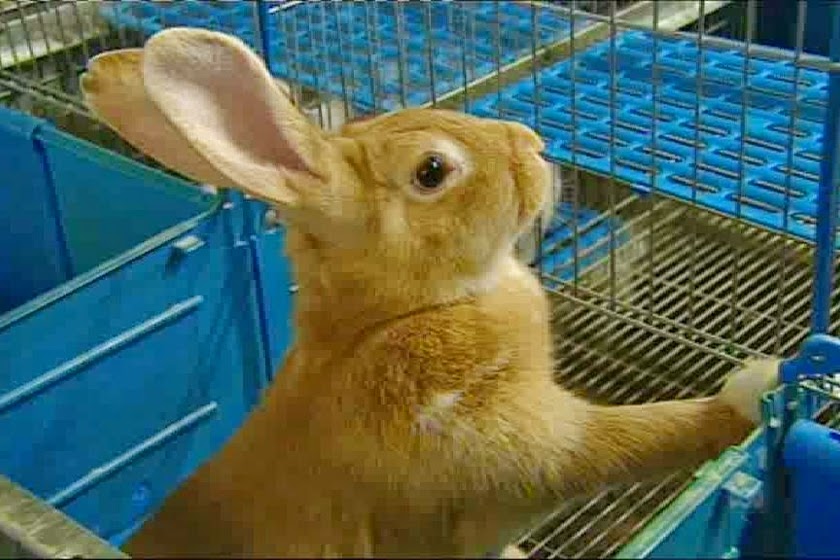There are many potential benefits that may be realized from backyard rabbit raising. When planning your rabbit enterprise it will be important that you identify a goal and anticipated benefits from farming rabbits. An example of a primary goal is to produce enough rabbits so that the family might consume meat from two fryers per week the year-round. This production goal would require a small backyard operation consisting of about four breeding females (does) and one breeding male (buck). As a backyard activity, and relative to most livestock or outdoor pet animals, rabbits are quiet, odorless and docile animals that often go unnoticed by neighbors, even in residential areas. However, residents living within legal city limits should inquire about possible restrictions concerning the keeping of rabbits by contacting their county health department office.
Overall benefits from a backyard rabbit enterprise include: nutritious and wholesome meat; educational experiences for youth; enjoyable occupational activity; rich manure for gardening or flower beds; and potential income generation. According to the USDA, meat from domesticated is an all white meat product that is high in protein and low in fat, sodium and cholesterol as compared to other common meats, such as beef, lamb, pork and poultry. Rabbit meat has been recommended for years by some physicians to their patients with coronary heart conditions.
Educational opportunities for youth, ideally as a 4-H or FFA club project activity, is a wonderful learning experience in the sciences of biology, such as animal behavior, genetics, growth development, and reproductive and digestive anatomy and function. Particularly for a young child, rabbits are easy to handle while representing a minor investment versus a project involving larger livestock. Rabbit raising also teaches responsibility, budgeting costs and returns, care and concern for animals, and the acceptance of livestock as a source of food for humans.
As an occupation of hobby - whether for the young, elderly or any family member - rabbit raising can be an enjoyable and family focused activity. The time or labor required to raise rabbits can be minimally figured to 10 hours per breeding doe in a year. For the backyard operation with four breeding does, this labor input relates to a single work-week (40 hours) per year equivalent, or less than 10 minutes per day. However, many families enjoy spending more time than this with their rabbits.
Rabbit farming compliments the efforts of the serious gardener and flowering plan enthusiast. The manure from rabbits makes excellent compost, rich in organic matter and nutrients, that can produce remarkable garden and flowering results. Commercial redworms or African nitecrawlers grown in rabbit manure produce a superb and fairly odorless organic material that resembles peat moss. Many commercial rabbit producers market both the organic material in bags and bait worms in cartons as a supplemental source of income. For the family that enjoys fishing, one also has a regular supply of bait worms.
The small size of the backyard rabbit enterprise, typically 4 to 5 breeding does, represents steady meat production at minimal investment and operating costs. It is takes little time or money to either down-scale or expand the size of the operation. Labor is ideally shared among family members. These features associate the rabbit enterprise with minimum economic risk.

No comments:
Post a Comment